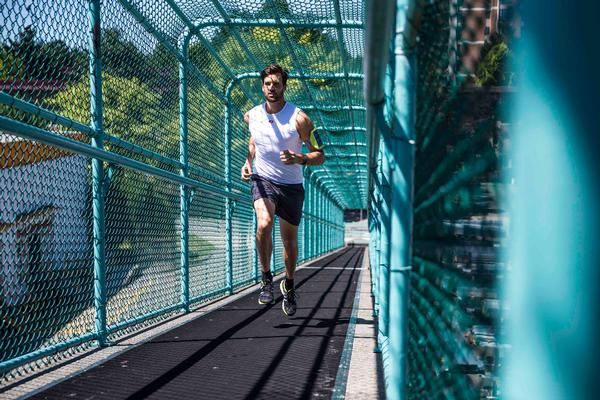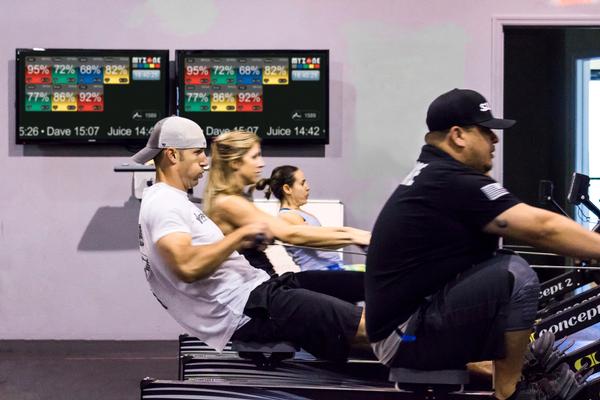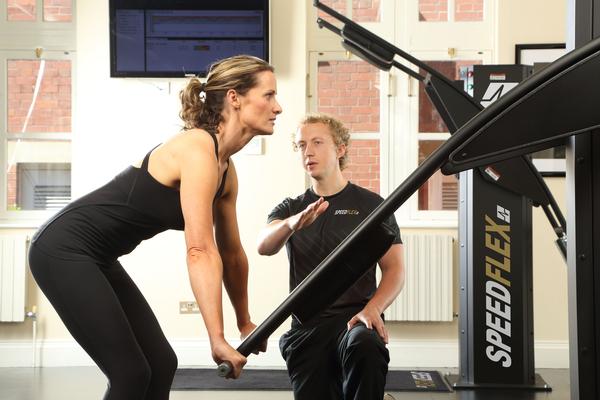



SELECTED
ISSUE
|
|
Leisure Management - Take it up a beat

Heart rate training

|
|
| Take it up a beat
|

What’s the future of heart rate training, and how do we embrace it?
|


Gyms must offer advice based on data from people’s devices
|
|
|
Heart rate training first hit the headlines in 1976, when the Finnish cross country ski team swept the board at the Winter Olympics after training this way. From then on it became popular among elite athletes, but cumbersome chest straps and baffling information made the uptake slow among the general public. However, the conversation is certainly in full swing now thanks to operators like Orangetheory Fitness, which has put heart rate training at the centre of its offering. With growing awareness and fast evolving technology, where is heart rate training heading?
|
|
 |

Liz Dickinson
CEO
Mio Fuse
 |
|
Heart rate training is set to become far more pervasive. Since the introduction of the wristband, apps are springing up teaching people how to understand heart rate training and group classes are using it, with heart rates displayed on a big screen. The technology is still fairly large and limited in terms of the activities it can measure, but in the not too distant future it will become smaller, with metrics to help with training optimisation, including oxygenation, respiration and hydration.
Hydration is important. Most people are dehydrated but don’t realise it – it can make them think they’re hungry. Oxygenation and respiration are metrics more relevant for the upper echelons: oxygenation measures the efficiency of your cardiovascular system, making sure you’re optimising exercise in such a way that you’re getting enough oxygen to feed your muscles.
We’re currently working with major clothing companies with a view to integrating the technology into clothes, so soon the monitoring of our vital statistics will become just another thing we take for granted.
As heart rate technology becomes more widespread, and in multiple forms, clubs need to be ready to take the data that streams from those devices and offer guidance and training advice. They could also change their programming so it’s more centred around heart rate. It will make a dramatic impact, because people will start to train efficiently instead of spending hours at the gym without seeing any benefit. They’ll see weight loss and increases in CV strength, which helps in all areas. It will really change the ability of the average person to get in shape.
The growth in this technology will lead to more apps and websites being developed to deliver coaching, so gyms would be well advised to create an app for themselves.
|
|
|
Training at any intensity without available data is like driving your car without a dashboard. Heart rate data brings that knowledge to the forefront.
Credibility and data capture will be the focus going forward. Technology has moved on from being accelerometer-based, but even wrist-mounted heart rate monitors are not 100 per cent accurate – they use optical blood flow, shining a light through the wrist, and thus can’t accurately measure activities where the wrist moves erratically, such as functional training.
The issue the industry faces is that we need an accurate way of measuring heart rate data that’s both frictionless and credible. At the moment, technology doesn’t tend to tick both boxes, but it won’t take long before a chip is embedded into the skin to transmit data wirelessly. MYZONE is currently working with sports bra manufacturers such as Purelime, Victoria’s Secret and Clothing Plus to look at embedding sensors into the clothing: the MYZONE module would merely button onto the garment.
Wearable technology will give the NHS the ability to collate data in a frictionless manner and align with the CMO guidelines, which are based on intensity that can only be measured as a percentage of your maximum heart rate.
Upskilling is needed to make the most of this opportunity, as currently there are some common misconceptions – for example, people need to know that fitness is not determined by your maximum heart rate but by your resting heart rate and how quickly you recover after activity.
| |


|

MYZONE is looking to embed sensors into sports bras and clothing |
|
|
 |

Simon Bateman
MD
HIIT Gym
 |
|
Devices are set to become less obtrusive, so people won’t even notice they’re wearing them. One of the big pushes will be on making heart rate technology more accurate, as well as integrating with people’s daily lives so health clubs get a more holistic view of what their clients are doing away from the gym.
To do this, devices need to become easier to wear: there’s still evidence that, after the initial novelty, people get bored of wearing them and they end up in a drawer. But before long, heart rate monitors will become widely available in clothing, or as stickers on the skin. At this point, health clubs need to make sure they’re geared up for the changes the technology will bring. The key to success will be how well gym instructors can interpret the results. They will have to upskill and be confident in interpreting data and conveying it to clients in an understandable way.
Instructors will need to evolve into wellness coaches, becoming more involved in people’s lives and what they’re doing outside of the gym, and using this information to help them get better results. They will need to spend more time with clients, building trust and being more proactive about helping them work towards their goals, identifying necessary lifestyle changes and imparting nutritional advice.
|
|
 |

Matt Bolam
Head of training
Speedflex
 |
|
Going forward, the advances in wearable technology and the growing awareness of heart rate training will make it more ubiquitous, so people will be prepared to wear monitors around the clock.
One of the exciting aspects is that it will allow clubs to get a more holistic view of the member’s lifestyle and use this to improve training results, as well as adherence and retention. We’ll be able to analyse how they react to their day-to-day stresses and how stimulants, diet or lack of sleep affect them. From this, we can inform their training programmes, bringing in other disciplines if needed – such as yoga and meditation – and giving diet, nutrition and other lifestyle advice.
There’s also potential to use heart rate monitors to create new revenue streams by providing in-depth analysis. For example, if a member runs a 10k race and wants to improve on their result for the next one, the gym instructor could analyse their performance and make recommendations.
| |


|

HR training enables in-depth fitness analysis |
|
|
 |

Lee Drabble
UK gym floor experience manager
Fitness First
 |
|
Having just opened our second BEAT location in London – a club within a club with heart rate training at the centre of the offering – we see heart rate training as a growing area. Monitors are cheap to buy and easy to store, and this style of training offers motivation and allows members to work out more efficiently to achieve results.
Going forward, what I’m most excited by isn’t the new technology but the new applications, which will allow us to train smarter and personalise data.
I think we’ll start to see heart rate training being put to wider uses, particularly weight loss. We worked on a couple of features for men’s consumer magazines and helped one guy lose 10 kilos in 10 weeks, and another lose 12 per cent body fat in six weeks. Heart rate training informed their programmes and identified the reasons they hadn’t been able to lose weight previously.
Everyone is different and needs to work at different intensities. One guy wasn’t losing weight because he wasn’t getting enough recovery time in his circuits class, so his body was eating muscle, not burning fat. It would be interesting to start using heart rate training in pilates and yoga classes too, as it would teach people to use their breath to control their heart rate.
|
|
 |

Arron Williams
Special projects
Life Fitness
 |
|
I don’t think there’s much of a bright future for heart rate training by itself. The positives are: it’s a useful way for novices to make endurance training more precise as an intensity metric; it can help keep you in the right training zone for endurance activities; it can provide biofeedback; it can help monitor a person’s progress; and it can also help prevent over-training.
The cons of heart rate training are that it isn’t performance-relevant: pace and power are more relevant, reliable metrics for performance training. Secondly, HR max formulas contain a wide margin of error, with large deviations dependent on age and gender. Lack of sleep, emotional stress, diet and weather can all significantly affect heart rate.
Finally, there’s the issue of reliability and accuracy of heart rate monitors, particularly with some of the newer wearables.
In the future, a data-powered lifestyle will provide a host of metrics for tracking; heart rate will be just one of many metrics that help us optimise our health and wellbeing.
“In the future, a data-powered lifestyle will provide a host of metrics for tracking; heart rate will be just one”
|
|
 |
| Originally published in Health Club Management 2015 issue 7
|
|
 |
|
